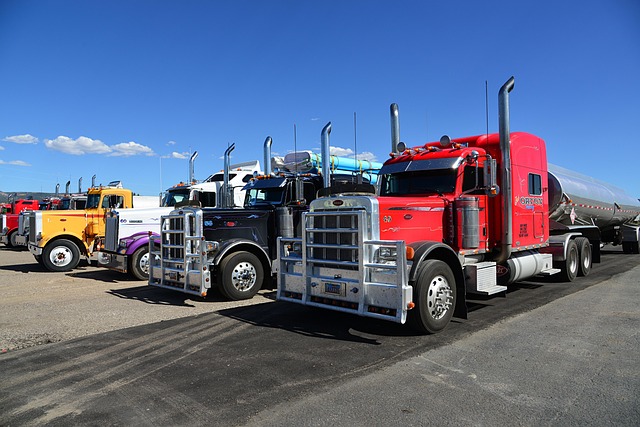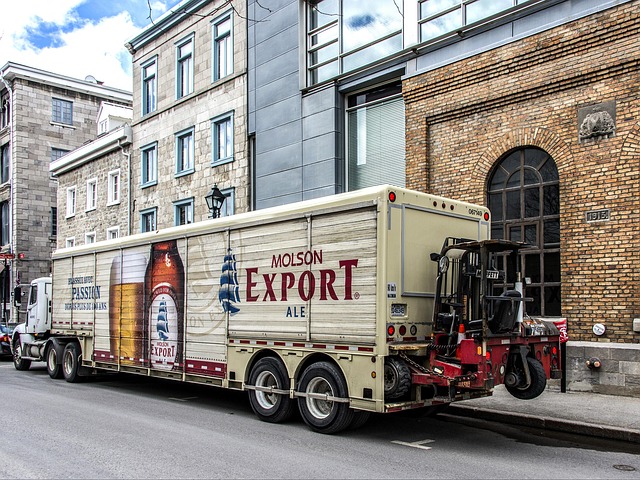Registering a Car in California: Step-by-Step Guide with VIN Verification
Looking to register your car in California? This comprehensive guide walks you through every step, from understanding key requirements to completing the registration process. We’ll highlight the impor…….

Looking to register your car in California? This comprehensive guide walks you through every step, from understanding key requirements to completing the registration process. We’ll highlight the importance of VIN verification and how it ensures compliance with state laws. Gather essential documents, conduct a vehicle history report, and visit a local DMV office. By following these steps, you’ll have your car registered smoothly and legally in California.
- Understand the Requirements for Car Registration in California
- Gather Necessary Documents for VIN Verification
- Perform a Vehicle History Report and VIN Check
- Visit a California Department of Motor Vehicles (DMV) Office
- Complete the Registration Process and Receive Your Plates
Understand the Requirements for Car Registration in California

Before you begin the registration process, it’s crucial to understand the requirements for car registration in California. This involves ensuring your vehicle meets all safety and emission standards set by the state. One key step is undergoing a Vehicle Identification Number (VIN) verification process, which checks that your car’s VIN matches the information on record with the manufacturer. In California, this often includes a thorough inspection to confirm the vehicle’s identity and condition.
Additionally, for peace of mind, consider a mobile VIN inspection or verification service. These services bring the inspection directly to you, saving time and effort compared to traditional methods. By completing these steps, you’ll be well on your way to registering your car smoothly and efficiently according to California regulations.
Gather Necessary Documents for VIN Verification

Before you begin the car registration process in California, make sure to gather all the essential documents for a smooth vin verification. This includes your vehicle’s vin (vehicle identification number), which is typically located on the dashboard near the driver’s side door or on the engine block. Also, prepare your valid driver’s license, proof of insurance, and the registration fee. For out-of-state vehicles, you’ll need a title transfer from the previous owner.
Additionally, consider having a mobile vin verification or vin inspection done to ensure everything is in order before heading to the California Department of Motor Vehicles (DMV). This can save time and potential headaches later on, especially if there are any discrepancies found during the official check.
Perform a Vehicle History Report and VIN Check

Before registering your car in California, performing a Vehicle History Report and VIN (Vehicle Identification Number) check is crucial. This step ensures that the vehicle’s history is clear and helps prevent fraud. A comprehensive report will reveal any previous accidents, ownership changes, and maintenance records, which are essential for accurate registration.
A VIN inspection, often performed by a mobile vin verifier or through an online service, allows you to verify the vehicle’s identity and its compliance with California’s requirements. This process is simple and can be done quickly, ensuring that your car meets all necessary standards before proceeding with registration.
Visit a California Department of Motor Vehicles (DMV) Office

To begin the process of registering your car in California, start by visiting a local California Department of Motor Vehicles (DMV) Office. This is where you’ll initiate the formalities required to get your vehicle on the state’s roads legally. The DMV team will guide you through the necessary steps and ensure that all documentation is in order.
One crucial step during this process involves a vin verification, which can be completed at any DMV location. Alternatively, consider availing of services like mobile vin inspection or a mobile vin verifier for added convenience—these options allow a professional to conduct the vin check at your preferred location and time, making the task even easier.
Complete the Registration Process and Receive Your Plates

Once you’ve gathered all the necessary documents and passed the smog test, it’s time to complete the registration process with the DMV. This involves submitting your application form, providing proof of insurance, and paying the registration fee. After reviewing your documentation, the DMV will conduct a vin verification to ensure the vehicle’s identification number (VIN) is accurate and matches the make and model on file.
Successfully passing this step completes your registration. You’ll receive your personalized license plates, typically within a few weeks, and can now legally drive your car on California roads. As an alternative to visiting a DMV office, consider scheduling a mobile vin inspection or vin inspection for added convenience, allowing the process to be completed at your preferred location.
Registering your car in California involves several straightforward steps. By understanding the requirements, gathering the necessary documents, including a valid vehicle identification number (VIN) verification, and visiting a local DMV office, you can complete the process efficiently. A clean vehicle history report is crucial for a successful registration, ensuring your car is safe and legal to hit the California roads. Once approved, you’ll receive your personalized license plates, marking the end of your VIN verification journey and the beginning of enjoyable drives across the Golden State.







